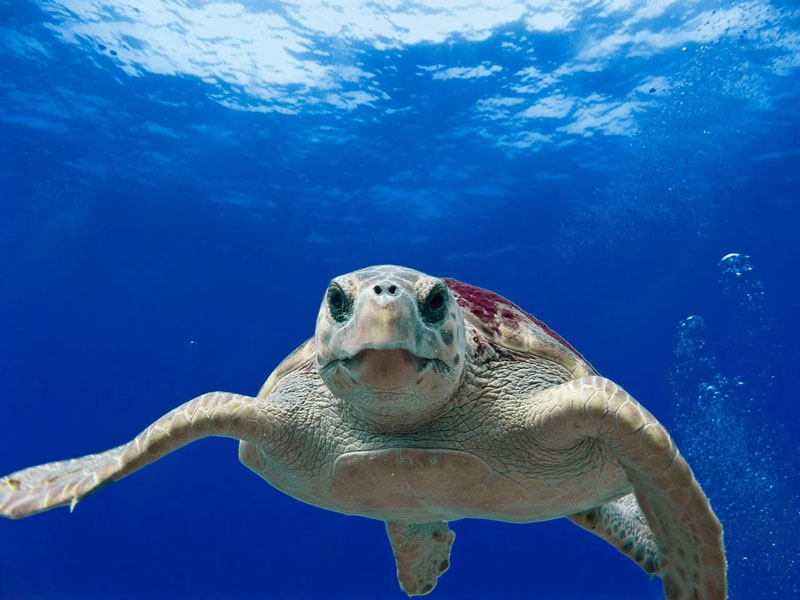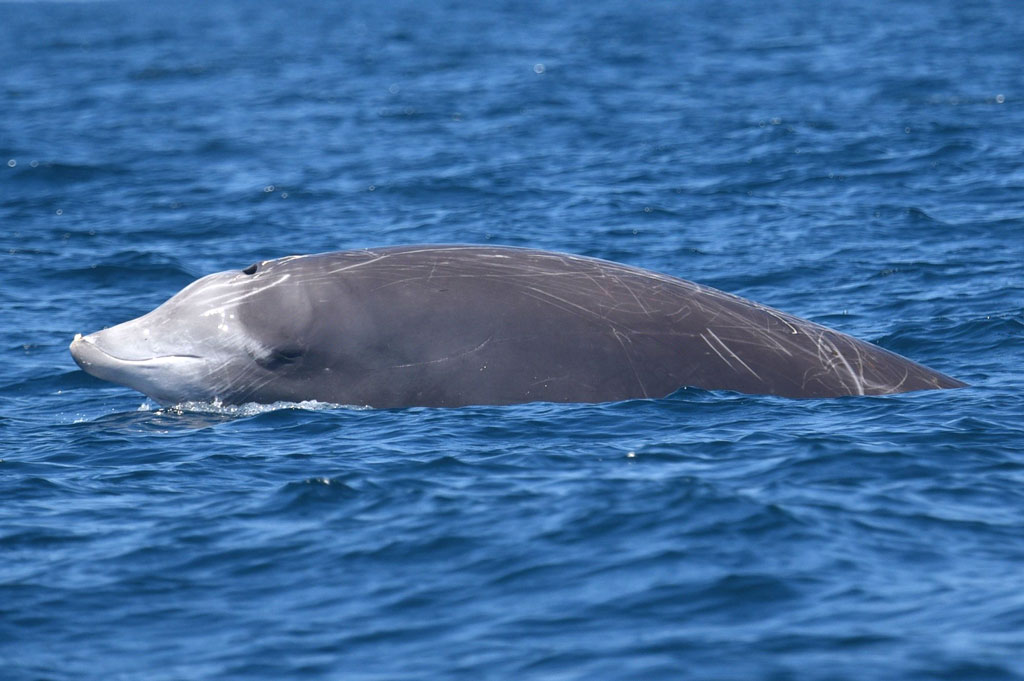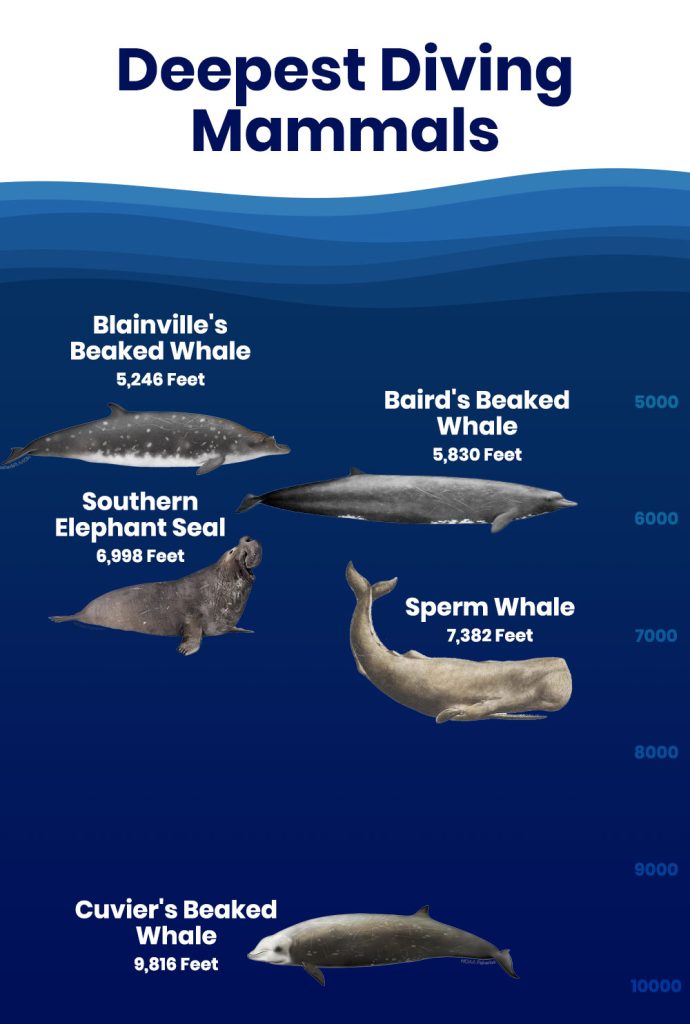Most marine animals like fish, sharks, lobsters, and crabs can breathe underwater. However, other marine animals that live part or most of their lives in water like whales, turtles, sea otters, and seals, cannot breathe underwater.
Take whales for example. Have you ever wondered why they often come up to the surface to breathe? It’s solely because they are incapable of breathing underwater and must surface each time to take a new breath.
While whales can hold their breath for a long time (we’ll come back to this later in the article), they cannot hold their breath underwater for as long as turtles.
Longest Breath for Cold-Blooded Animal
Loggerhead Sea Turtles
The Loggerhead Sea Turtle can hold its breath up to 10 hours – longer than any other animal.

Many turtle species for example are known to hibernate on the bottom of frozen lakes during winter. During this time, they do not use their lungs and can remain underwater for up to 10 hours. Green sea turtles are capable of holding their breath underwater for about 5 hours while Loggerhead sea turtles (Caretta caretta) can remain underwater for about 10 hours as long as it’s not in any form of distress.
However, turtles are ectotherms. Ectotherms (cold-blooded) are animals that rely on outside sources of heat and thus, it’s easier for them to survive for so long without oxygen unlike endotherms (warm-blooded; example: mammals including humans) which need oxygen throughout to keep their bodies warm and running.
Can turtles Breathe Underwater?
No, turtles cannot breathe underwater and must hold their breath for the duration of their dive (up to 10 hours!). To stay underwater for extended periods of time during hibernation, their whole body system basically shuts down, although they do take in small amounts of oxygen through their highly vascularized rear ends in a process known as Cloacal Respiration.
How long can turtles hold their breath?
Turtles can hold their breath for around 45 minutes to 1 hour. But the Loggerhead Sea Turtle holds the record for turtles at 10 hours.
So in this case, another question we should be asking is, what warm blooded animal can hold its breath the longest?
Longest Breath for Warm-Blooded Animal
Cuvier’s Beaked Whale
The warm blooded animal that is capable of holding its breath for the longest period is the Cuvier’s Beaked Whale (Ziphius cavirostris).
The Cuvier’s Beaked Whales is a medium-sized whale that broke the world record for the mammal that could hold its breath underwater the longest – 2 hours and 17 minutes.

The Cuvier’s Beaked Whale, which is characterized by a robust, cigar-shaped body, also holds the record for the deepest diving marine mammal. When hunting for food underwater, these marine mammals are capable of diving approximately 9,800 feet beneath the surface and can hold their breath for at least 67 minutes. One record-breaking dive that was documented in one study lasted for 138 minutes, which is truly impressive considering that the whale is an endothermic warm-blooded animal.
Previously, the Northern Elephant Seal was thought to be the longest breath-holding animal after a record-breaking dive in the breath-holding Olympics that lasted for 119 minutes. Female elephant seals have also been recorded holding their breaths an impressive 120 minutes and diving more than 4000 feet underwater.
After the elephant seal, the Sperm Whale takes the third position at 90 minutes.
How Do Whales Hold their Breath for So Long?
Cuvier’s beaked whales can dive thousands of meters below the ocean waves and remain there for a very long time. Like all whales, they must come to the surface for a fresh breath of oxygen which enables them to stay in water for remarkably long periods.
However, it’s interesting to learn that Cuvier’s beaked whales don’t just dive and hold their breaths occasionally- it’s something they do many times each day. Even more surprising is the swift recovery after such deep and long dives.
Given that they are smaller compared to sperm whales, how are these whales and other deep-diving whales able to remain underwater for such long periods? How are they able to survive without air for so long and even withstand the extreme pressure when diving at such great depths?
Well, there is a simple explanation for this. You see, unlike humans, these marine mammals are specially adapted to store oxygen in their blood and muscles instead of lungs.
The reason why they are able to store so much oxygen in their blood and muscles is due to the high levels of proteins known as hemoglobin and myoglobin in their blood and muscles.
This is why whales have blood and muscles that are extremely dark red, almost black in color.
So in other words, whales and other diving mammals are able to store more oxygen than us humans and other animals. That’s how they are able to hold their breaths in water for so long.
But having high levels of hemoglobin and myoglobin in their blood and muscles isn’t the only reason why these beaked whales are able to survive many feet inside the ocean. While in deep waters, these whales and other diving animals slow their heart rates and stop blood from flowing to certain parts of their bodies like the liver and kidney. Instead, the oxygen-rich blood is redirected to the more essential organs like the heart, brain, and muscles.
Additionally, these whales have a streamlined body shape (torpedo-like shape) that allows them to swim or glide with less effort, thus reducing their oxygen consumption by a huge percentage. This again allows them to have more oxygen to use, allowing them to stay underwater for long without coming up for air.
How long can whales hold their breath?
The average whale can hold its breath for 1 hour, but the Cuvier’s Beaked Whale holds the record at 2 hours and 17 minutes!
How long can a blue whale hold its breath?
A blue whale can hold its breath up to 1 hour. Typically, blue whales only dive for about 30 minutes at a time.
What Land Animal Can Hold its Breath the Longest?
The sloth. The sloth is not only a great swimmer, but it can also hold its breath longer than any other land animal.
How long can a sloth hold its breath?
A sloth can hold its breath for 40 minutes. This is quite impressive considering sloths are known to be some of the slowest animals in the world.
Frequently Asked Questions (FAQs)
Can Animals Hold their Breath?
Yes, most animals can hold their breaths. However, with the exception of Cuvier’s beaked whales, elephant seals, sperm whales, and other diving animals, very few can hold their breaths for a long time in the water.
How long can dolphins hold their breath?
Dolphins can hold their breath for 8 – 10 minutes. But typically, they come up to take a breath about 4 to 5 times a minute. When actively playing or hunting, they might take 8 to 12 breaths a minute.
How long can hippos hold their breath?
Hippos can hold their breath for 5 minutes. Despite their large size and hoofed feet, Hippopotamuses love water and were given the nickname „river horse” by the Greeks. They spend large parts of their day in water, sometimes up to 16 hours per day.
How long can the average person hold their breath?
The average human can hold their breath between 30 seconds and 2 minutes. This is relatively short compared to some of the animals we discuss above.
Aleix Segura Vendrell from Barcelona holds the world record for holding his breath for a whopping 24 minutes, which is impressive and shocking at the same time! Except for Aleix Segura Vendrell, most people would pass out or even drown after surpassing 2 minutes. We just aren’t built to survive underwater for extended periods.
Bottom Line
Given that killer whales are known to hold their breath for at least 15 minutes, it comes as a surprise for many to learn that medium-sized beaked whales can actually last for as long as 138 minutes. Additionally, learning why and how it happens is even more surprising. It’s truly impressive.

Lydia King is a huge animal lover and has always been fascinated with learning about the animal kingdom. She enjoys writing about anything animal related from scientific information about rare species to animal references in pop culture.













